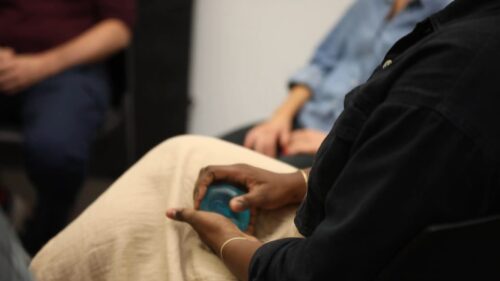Arsheen Qasim of the Centre for Justice Innovation spoke with Phil Bowen about Transatlantic Learning, his monograph about problem-solving courts in Scotland.
Your new paper is called “Transatlantic Learning.” Briefly, what is the paper about?
A big part of the Centre for Justice Innovation’s role is to connect practitioners and policymakers on both sides of the Atlantic to one another. ‘Transatlantic Learning came out of a series of events we were invited to help organise and participate in Scotland in September 2012. Three judges from U.S. problem-solving courts came over to participate in those events. They were a practical opportunity for two jurisdictions to come together to share notes and we captured the learning from those events in a number of interviews with participants once they had a chance to reflect on what they learnt.
What is the paper’s central message?
The biggest take away for me is that if a jurisdiction wants their court system to play a more active role in reducing re-offending, the judiciary has to feel willing and able to make the improvements they want to see. While some sheriffs (the Scottish term for judges) we interviewed had some genuine concerns about whether the court could adopt that ‘problem-solving’ role, what leaped out to me is that often the changes needed are simply about making the court a better experience for all involved- whether that be having greater information on defendants for sheriffs or ensuring that the services available to court are better coordinated.
Did the events and writing the publication give you a sense that Scotland should have more problem-solving courts?
The first thing to say is, as the publication points out, there is already problem-solving court practice in the Scottish court system. We see it in the dedicated problem-solving courts, like the drug court in Glasgow. But we also see it, perhaps in a more limited way, in the use of the combination of treatment and judicial monitoring under the Drug Treatment and Testing Order. The thing that the publication really highlighted to me is that there are a number of sheriffs in Scotland who do want to make some incremental problem solving changes, often without needing more money or staff, and it is a question of providing the right support and leadership to help them do it.
Does that mean you don’t expect more to open?
We here at the Centre are very excited that there seems to be a number of opportunities in Scotland to build a more positive role for courts. From the recommendations from the Angolini report [‘The report of the Commission on Women Offenders’, Scottish Government (2012)] to the really positive atmosphere I have consistently encountered in meeting practitioners and Government officials in Scotland. I am confident that change is not just going to happen but is already happening. I am less concerned about simply having more courts that define themselves as formal problem-solving ones than I am in trying to help support court players and practitioners make the changes they want to make the lives of victims, defendants, and communities better.
Finally, do you have any reflections on working in Scotland?
There are differences of course— especially between British jurisdictions and the U.S.A, and then differences between Scotland as one jurisdiction and England and Wales as another. Because of our experience in working in different jurisdictions, the Centre for Justice Innovation has a fundamental mantra: local circumstances matter. There is quote from Lisbeth Schorr (a lecturer in Social Medicine at Harvard and a leader in the field of social policy innovation) that has always stuck with me— “The context is the most likely saboteur of the spread of good innovations.” You can’t lift one innovation from country ‘A’ and plonk it down in country ‘B’ without really working through how that idea best meets a need.

